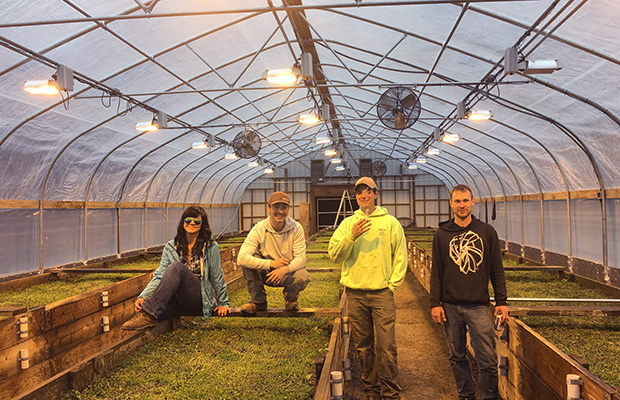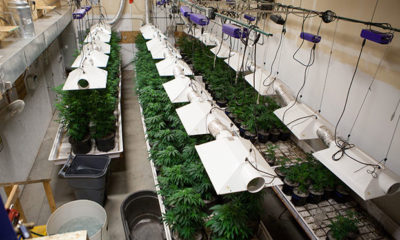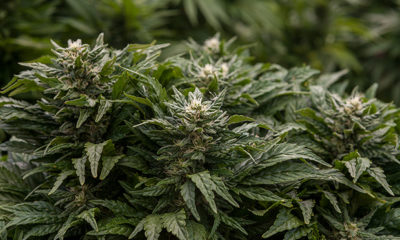
Cannabis
RIP to the OMMP: The Death of Medical Cannabis in Oregon
New laws for medical marijuana in Oregon is crushing OMMP and shutting out small farmers.
Glory Daze Botanicals is the epitome of a family farm. At their headquarters deep in the mountains of Southern Oregon, goats and horses keep fields mowed, chickens happily turn food scraps into compost, and well-kept orchards and garden plots provide fruits and vegetables year-round. But for well over a decade, small batch medicinal cannabis has been their focus.
GDB unofficially began in 2005, when the crew of five or so family members and friends began growing for themselves and a few needing patients under Oregon’s long-established Medical Marijuana Program.
When voters passed Initiative 28 in 2008 it allowed them to sell any of their surplus medicine to medical dispensaries around the state. The upstart remained small and true to their roots, choosing quality over quantity. They began investing time and money into a light supplemented and climate controlled greenhouse for year-round production.
Jeramiah Johnson, co-owner of GDB, and his now deceased father Ralph, built the structure themselves, and for the first time in many years, the lights are off, doors are closed and beds lay fallow.
“We just have nowhere to sell our product,” admits co-owner Jeramiah Johnson. “The state is trying as hard as they can to squeeze us out.”
Glory Daze is among thousands of medical marijuana producers in the state hit by a series of quick legislative changes to the program. While the OMMP still exists, Johnson believes the state is forcing out the small time farmers and bending to the beckoning of big business.
The history of OMMP
Oregon legalized adult use of cannabis in 2015 and medical marijuana dispensaries were the first to offer products to the public. In 2017 the state required all recreational marijuana sales go through Oregon Liquor Control Commission licensed dispensaries, a costly and time-consuming process involving thousands, often hundreds of thousands of dollars to acquire a license. Medical marijuana dispensaries were still allowed to buy and sell cannabis exclusively from and to medical patients.
Things changed again in the second quarter of 2017 when the state began allowing OLCC licensed dispensaries to sell products to medical patients, while not allowing medical marijuana growers to sell their product to recreational dispensaries. According to Johnson, this was the first nail in the coffin.
“There were hundreds of medical dispensaries across the state last year, now we are down to 11. We’ve visited every single one of them, and have product in most, but they are all saying the same thing, we just cannot compete with recreational dispensaries.”
Then on Oct. 12, GDB received a letter in the mail that would have their crew and growers across the state up in arms. In a closed-door session, Oregon legislature passed SB-1057. The new bill made drastic changes to the system. Patients are now effectively blocked from growing more than 12 plants at their place of residence, no matter the land use zoning. Rural residential properties now fall under the same 12-plant maximum restriction.
“We just spend $1,400 on renewing our patients’ cards, and it turned out to be a waste. We can no longer grow for my mom or my sister because they live at the same address as our grow site.”
Though the greenhouse is empty, Johnson and GDB have not admitted defeat. They applied and received approval for an OLCC producers license, but had planned on raising the capital to finish costly infrastructure improvements to their farm before going full blown recreational. From security systems, construction projects, permitting, licensing, and employee wages Johnson estimates a bare minimum of a $250,000 investment to enter the rec industry, even when they already own the property.
“We really wanted to do this all on our own, now we have to look for outside funding to get things up and running,” Johnson said. “We could just continue to produce and look for a place on the black market for our product, but we are doing everything by the books.”
For Emily Vandruff, one of a small handful of GDB’s employees, shutting down was the last thing she expected.
“We’ve done everything we can to keep going, produced a quality product we are proud of, followed testing and tracking requirements, visited every possible dispensary in the state, but we just can’t afford to keep going,” Vandruff said. “I’ve been pushed out of the best job I’ve ever had.”
The list of new rules changes almost monthly, but for now the state has begun grow site inspections and requires all growers with more than 12 plants to enter the METRC cannabis tracking system, a move government officials believe will help slow illegal out-of-state cannabis sales. Grower, on the other hand,d feel forced in the opposite direction.
“If you take away the legal outlet for farmers, they will be forced to find somewhere else to unload their product,” Johnson said.
At GDB, the crew is hopeful despite the shutdown.
“We will be back up and running soon, but I just wonder how many others won’t be so lucky,” Johnson said. “The OMMP allowed us to produce low-cost high-quality medicine for patients across the state. I just can’t shake the feeling that those very same patients are going to bare the brunt of these new laws.”
TELL US, are the new medical marijuana laws in Oregon affecting your cannabis supply or your business?




















